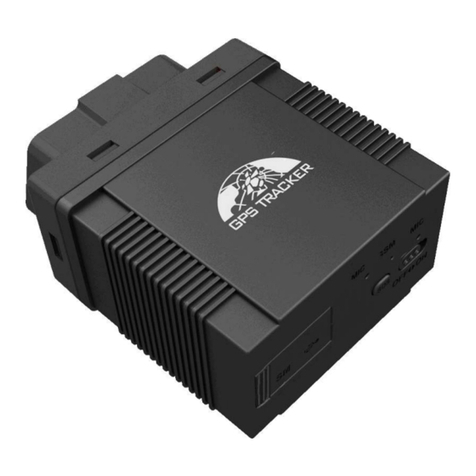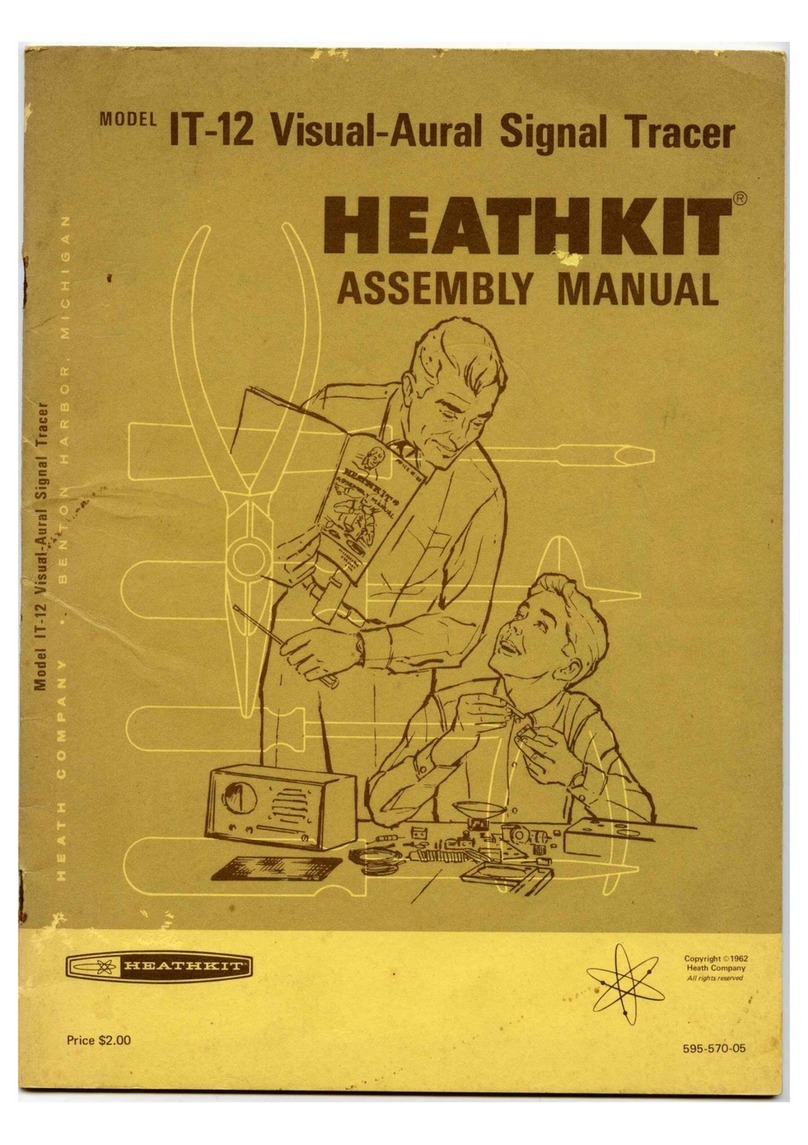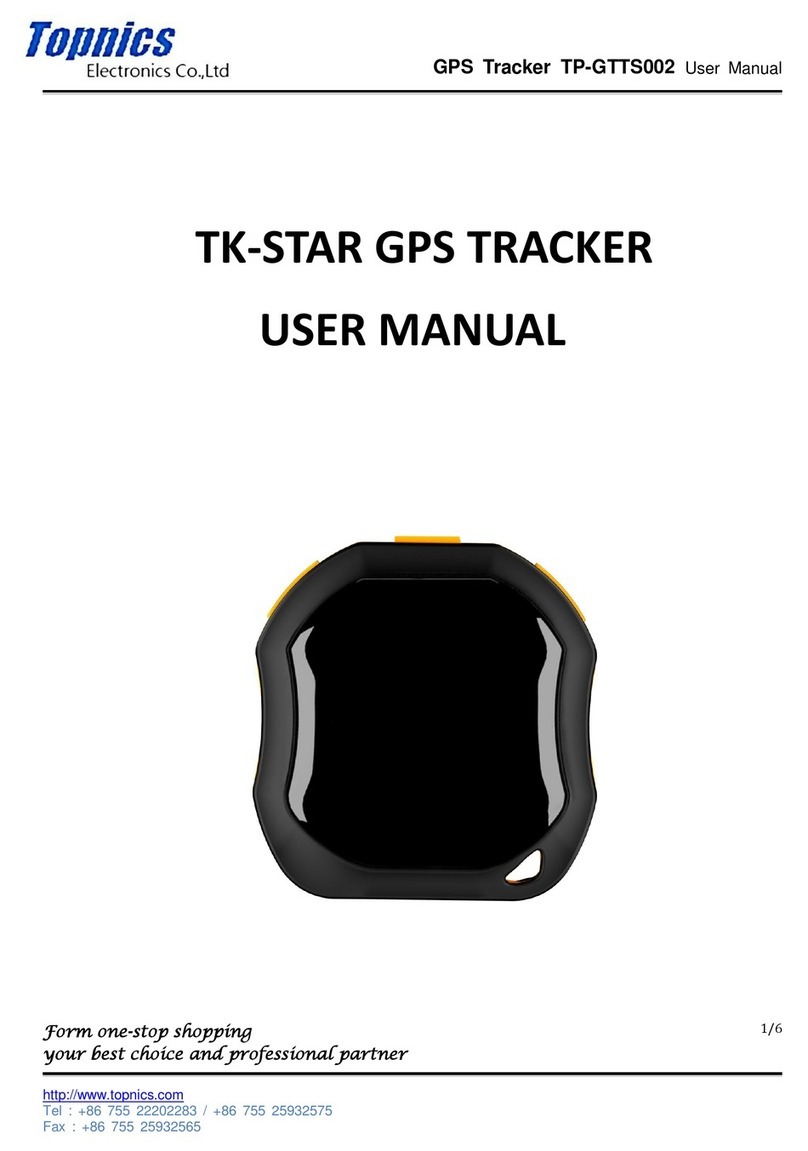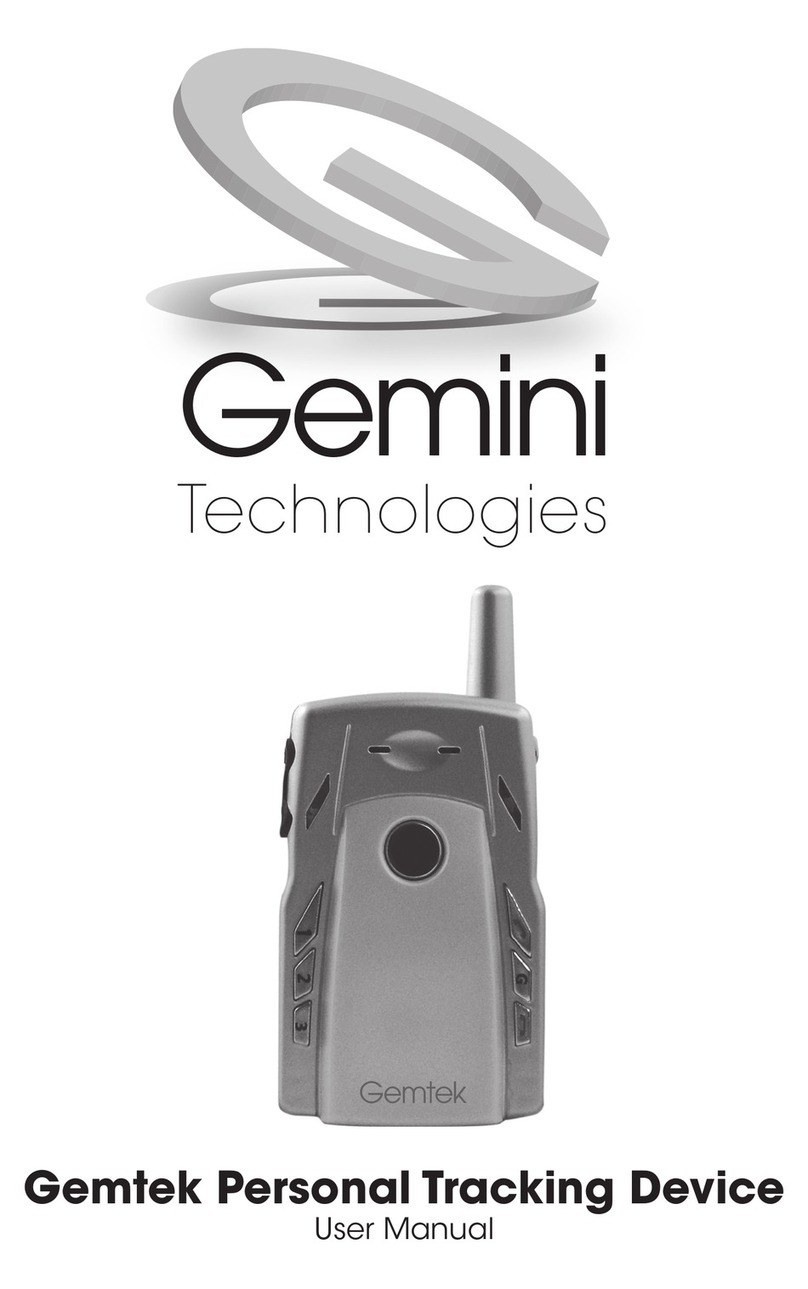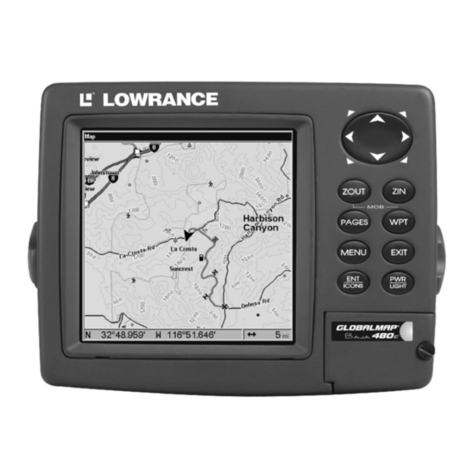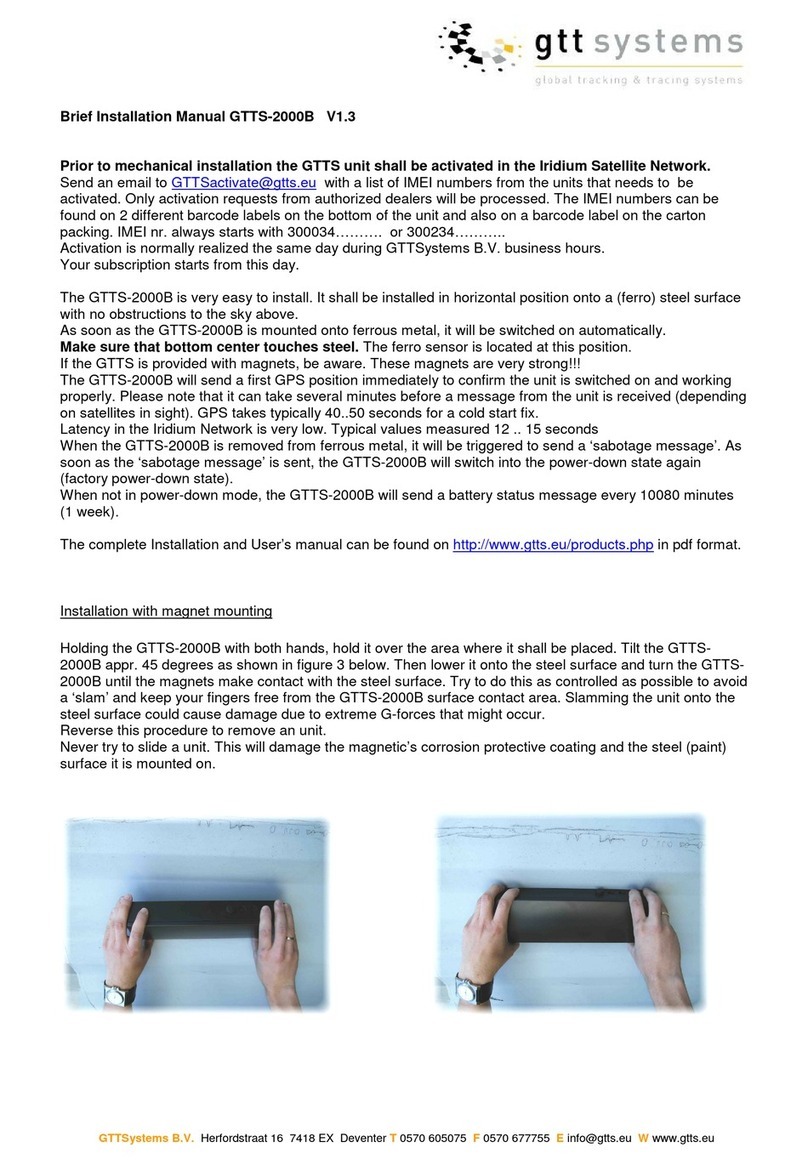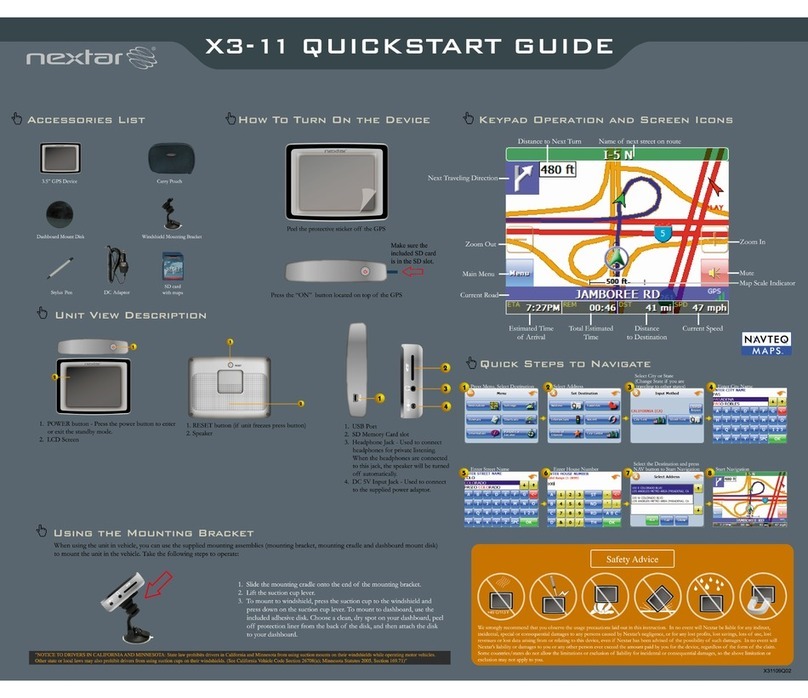GB Instruments Wire-Tracker GET-4110K User manual

Gardner
Bender
Wire-Tracker™
GET-4110K
LAN-Tracker™
GET-4220K
Instruction Manual
Manual de instrucciones
Manuel d'instructions

The Wire Tracker™ (GET-4110K) and
LAN Tracker™ (GET-4220K) are
designed to trace a variety of
unenergized wires. Each unit comes
with a transmitter and a receiver.
Under perfect conditions, the receiver
will function up to 12” from the wire
being traced. Results will vary based
on factors such as insulation type,
proximity to other bundled wire, etc.
This is normal, and is true of all wire
tracing devices on the market.
The transmitter contains five (5)
adapters for connection to common
wiring applications.
GET-4110K
RJ-11 Plug
Co-axial Plug
Two (2) Alligator Clips
Automotive Fuse Plug
1
Wire Tracing
Transmitter
GET-4110T
Transmitter
W
I
R
E
T
R
A
C
K
E
R
M
u
l
t
i
-
P
u
r
p
o
s
e
W
i
r
e
T
r
a
c
k
e
r
PUSH
ON
AUTO
OFF
WIRE TR
GET-4110R Rece

2
GET-4220K
RJ-11 Plug
Co-axial Plug
Two (2) Alligator Clips
RJ-45 Plug
To access the adapters, open the
back of the transmitter. All five plugs
are contained in individual slots.
During use, the appropriate plug can
be pulled out of the slot, and the
cover closed. The On/Off button is
located on the front of the housing.
To activate the unit, press this button
once. The LED will blink, indicating
that a signal is being transmitted.
The unit can be turned off by
pressing this button again.
To conserve battery life, the unit will
turn itself off after 30 minutes.
GET-4220T
Transmitter
L
A
N
T
R
A
C
K
E
R
M
u
l
t
i
-
P
u
r
p
o
s
e
W
i
r
e
T
r
a
c
k
e
r
PUSH
ON
AUTO
OFF
LAN TRA
GET-4220R Rece

3
The receiver can be placed in the
front slot of the transmitter for easy
storage. The unit contains an On/Off
button on the top, located behind the
sensitivity wheel. To activate the
receiver, press and hold this button.
The unit is now locating the signal.
Bring the unit near the wire being
traced. If this is the correct wire, an
audible “warbling” tone will be heard,
and the LED will increase in
brightness. Use the sensitivity wheel
to adjust the sensing range.
Electric Shock Hazard.
Trace only unenergized wiring.
Contact with live circuits can
result in severe injury or death.
Always disconnect power to the
circuit prior to using the
Wire Tracker or LAN Tracker.
Open the back of the transmitter and
select the appropriate plug or clip for
the wiring being traced.
Receiver
Tracing Wiring
!WARNING

4
Fold the plug or clip out and close
the housing door. Connect the
transmitter to the wiring and press
the On/Off button to activate.
Activate the receiver by depressing
the On/Off button and continuing to
hold down. Bring the receiver near
the transmitter and check for the
audible and visual signals. This
verifies that both units are functioning
properly. Trace wiring by following
the audible and visual signals that
the receiver is producing.
To prevent interference, disconnect
the house line from the main
telephone company service. This can
be done by locating the junction box
where the house is connected to the
telephone company wiring. Remove
any connections from the house to
this box, making sure to note the
proper location of each wire for later
reconnection. Use the RJ-11
(telephone) plug for insertion into a
standard telephone jack. Trace the
wiring as described above.
Tracing Telephone Wiring

5
To enhance the signal strength and
increase the operating range of the
receiver, the black alligator clip may
be connected to an external
equipment ground. This will greatly
increase the functional range of the
receiver.
To prevent interference, disconnect
the cable in the house from the cable
company wiring. This connection can
be found where the main cable enters
the house. Connect the co-axial plug
to any co-axial jack in the house.
Trace the wiring as described above.
(GET-4110K Only)
• Do not use on any component of
the ignition system.
• Before using this device check
the vehicle’s electrical wiring and
disconnect any component that is
Tracing Co-axial Wiring
Tracing Automobile Wiring
!WARNING

6
sensitive to voltage and current
pulses such as air bags, electronic
control modules, etc.
• Do not connect the transmitter to
circuits for power-train, engine,
transmission, ABS brakes or any
other electronic control modules.
Locate the fuse box in the automobile.
Remove the appropriate fuse for the
wiring being traced. This will also
disconnect the power from the battery.
Insert the fuse plug into the non-
energized side of the fuse receptacle.
Trace the wiring as described above.
To boost the signal, the black alligator
clip may be connected to a suitable
ground, such as the car frame.
(GET-4220K Only)
To prevent interference, remove all
connections from the data network to
any outside source. Use the RJ-45
(data) plug for insertion into a
standard data/LAN jack.
Tracing Data/LAN Wiring

7
Trace the wiring as described above.
You may notice that the receiver must
be contacting the LAN wire and is
stronger along one side of the wire.
This is normal and is due to the
physical properties of the LAN cable,
which is designed to prevent
interference from external signals.
Make sure all wiring is
disconnected from any
power source.
To trace a single wire, connect the red
lead alligator clip to the wire to be
traced. To boost the signal, connect
the black lead alligator clip to a
suitable ground. Two wires can be
traced at the same time by connecting
one alligator clip to each wire;
however, the signal will not be as
strong as it is while tracing a single
wire with the black alligator clip
connected to ground. Trace the wiring
as described above.
Tracing Other Unenergized
Wiring
!WARNING

8
The Transmitter uses two (2) AAA
batteries. To replace them, open the
transmitter case and identify the
battery compartment on the left.
Remove the cover and replace the
batteries, noting the polarity shown
on the cover.
The Receiver uses four (4) button
cell batteries (LR44). To replace
them, locate the battery cover at the
back of the tester. Push the cover off
to expose the batteries. Replace with
new batteries, noting the polarity
shown in the battery compartment.
Battery Replacement

9
Los dispositivos Wire Tracker™ (GET-
4110K) y LAN Tracker™ (GET-4220K)
han sido diseñados para rastrear cables
diversos por los cuales no se transmite
corriente. Cada unidad viene equipada
con un transmisor y un receptor. En
condiciones ideales, el receptor puede
funcionar a una distancia de hasta 30,5
cm (12") desde el cable que se está
rastreando. Los resultados varían según
factores tales como el tipo de aislamiento,
la proximidad a otro cable de conductos
múltiples, etc. Esto es normal y se aplica
a todos los dispositivos de rastreo de
cables disponibles en el mercado.
El transmisor tiene cinco (5) adaptadores
que permiten su conexión con cables de
aplicaciones comunes.
GET-4110K
Enchufe RJ-11
Enchufe coaxial
Dos (2) pinzas cocodrilo
Tapón fusible automotriz
Rastreo de cables
Transmisor
GET-4110T
Transmitter
W
I
R
E
T
R
A
C
K
E
R
M
u
l
t
i
-
P
u
r
p
o
s
e
W
i
r
e
T
r
a
c
k
e
r
PUSH
ON
AUTO
OFF
WIRE TR
GET-4110R Rece

10
GET-4220K
Enchufe RJ-11
Enchufe coaxial
Dos (2) pinzas cocodrilo
Enchufe RJ-45
Para obtener acceso a los
adaptadores, abra la parte posterior
del transmisor. Los cinco enchufes se
encuentran en ranuras individuales.
Se puede retirar el enchufe
apropiado de la ranura y cerrar la
tapa al usar el dispositivo. El botón
de encendido (On/Off) está situado
en el frente del gabinete. Para
activar la unidad, presione este botón
una vez. Un indicador lumínico tipo
LED titilará, lo cual indicará que se
está transmitiendo una señal. Para
apagar la unidad, presione este
botón nuevamente. La unidad se
apagará automáticamente pasados
los 30 minutos con el fin de preservar
la duración de las pilas.
GET-4220T
Transmitter
L
A
N
T
R
A
C
K
E
R
M
u
l
t
i
-
P
u
r
p
o
s
e
W
i
r
e
T
r
a
c
k
e
r
PUSH
ON
AUTO
OFF
LAN TRA
GET-4220R Rece

La ranura delantera del transmisor es
un lugar útil para guardar el receptor.
La unidad tiene un botón de
encendido (On/Off) situado detrás del
control de sensibilidad, en la parte
superior. Para activar el receptor,
oprima este botón y manténgalo
presionado. La unidad intentará
localizar la señal. Acérquela al cable
que esté rastreando. Al encontrar el
cable correcto, la unidad emitirá un
sonido modulado y el brillo del LED
aumentará. Utilice el dial de control
de sensibilidad para regular el
alcance del sensor.
Peligro de electrochoque. Rastree
únicamente cables sin corriente. El
contacto con circuitos activos
puede causar lesiones graves o
inclusive la muerte. Desconecte
siempre el suministro eléctrico del
circuito que se disponga a rastrear
antes de utilizar el Wire Tracker o
el LAN Tracker.
Receptor
Rastreo de cableado
!ADVERTENCIA
11

12
Abra la parte posterior del transmisor
y elija el enchufe o la pinza
adecuada para el cable que desee
rastrear. Retire el enchufe o la pinza
y cierre la tapa del gabinete. Conecte
el transmisor al cable y presione el
botón de encendido (On/Off) para
activarlo. Active el receptor
oprimiendo el botón de encendido y
manteniéndolo presionado. Acerque
el receptor al transmisor y verifique
si hay señales visuales y audibles.
De esta manera comprobará si las
dos unidades están funcionando
correctamente. Rastree el cable
siguiendo las señales audibles y
visuales producidas por el receptor.
Para evitar interferencias,
desconecte la línea de la vivienda de
la línea de servicio principal de la
compañía telefónica. Para ello,
localice la caja de conexiones donde
se conecta la línea de la vivienda al
cableado de la compañía telefónica.
Retire toda conexión de la vivienda a
Rastreo de cableado
telefónico

13
la caja, asegurándose de recordar la
posición exacta de cada cable para
luego poder reconectarlo. Utilice el
enchufe RJ-11 (telefónico) para
insertarlo en un conector hembra
telefónico estándar. Rastree el cable
según se describe más arriba. Para
mejorar la señal y aumentar el
alcance de operación del receptor,
puede conectar la pinza cocodrilo
negra a una toma de tierra de algún
equipo externo. De esta manera
aumentará considerablemente el
alcance del receptor. Para evitar
interferencias, desconecte la línea de
la vivienda de la línea de servicio
principal de la compañía telefónica.
Para ello, localice la caja de
conexiones donde se conecta la línea
de la vivienda al cableado de la
compañía telefónica. Retire toda
conexión de la vivienda a la caja,
asegurándose de recordar la posición
exacta de cada cable para luego
poder reconectarlo. Utilice el enchufe
RJ-11 (telefónico) para insertarlo en
un conector hembra telefónico
estándar. Rastree el cable según se
describe más arriba. Para mejorar la

14
señal y aumentar el alcance de
operación del receptor, puede
conectar la pinza cocodrilo negra a
una toma de tierra de algún equipo
externo. De esta manera aumentará
considerablemente el alcance del
receptor.
Para evitar toda clase de
interferencias, desconecte el cable
de la vivienda del cableado de la
compañía de cable. Es posible
encontrar esta conexión en el sitio
donde el cable principal ingresa a la
vivienda. Conecte la ficha coaxial a
cualquier enchufe coaxial hembra de
la vivienda. Rastree el cable según
se describe más arriba.
(GET-4110K
únicamente)
• No utilice el dispositivo en
Rastreo de cableado coaxial
Rastreo de cableado
automotriz
!ADVERTENCIA

15
ninguno de los componentes del
sistema de arranque.
• Antes de utilizar este dispositivo,
verifique el cableado eléctrico del
vehículo y desconecte todo
componente que sea sensible al
voltaje y a los impulsos de
corriente, tales como las bolsas
de aire (air bags), los módulos de
control electrónico, etc.
• No conecte el transmisor a
circuitos para el control del
sistema de potencia, motor,
transmisión, frenos con sistema
antibloqueo (ABS) ni a cualquier
otro módulo de contro electrónico.
Localice la caja de fusibles del
vehículo. Retire el fusible
correspondiente al cable que desee
rastrear. Al hacerlo, también
desconectará el circuito de
alimentación de la batería. Introduzca
el tapón fusible en el lado del
receptáculo del fusible que no tenga
corriente. Rastree el cable según se
describe más arriba. Para mejorar la
señal, puede conectar la pinza
cocodrilo negra a una toma de tierra

apropiada, como por ejemplo el
chasis del vehículo.
(GET-4220K únicamente)
Para evitar toda clase de interferencias,
retire las conexiones de la red de
datos a toda fuente externa. Utilice el
enchufe RJ-45 (datos) para insertarlo
en un conector hembra de datos/LAN
estándar. Rastree el cable según se
describe más arriba. Podrá observar
que es necesario que el receptor se
encuentre en contacto con el cable de
la red LAN y es más fuerte a un lado
del cable. Esto es normal y se debe a
las propiedades físicas del cable LAN,
que ha sido diseñado para evitar
interferencias de señales externas.
Asegúrese de desconectar todo cable
ado de fuentes de energía. Para
rastrear un solo cable, conecte la
pinza cocodrilo al cable que desee
rastrear. Para mejorar la señal,
16
Rastreo de cableado de red
de área local (LAN) o de
datos
Rastreo de otros tipos de
cab leado sin corriente

conecte la pinza cocodrilo negra a
una toma de tierra adecuada. Es
posible rastrear dos cables al mismo
tiempo conectando una pinza
cocodrilo a cada cable. Sin embargo,
la señal no será tan intensa como lo
es cuando se rastrea un solo cable
con la pinza cocodrilo negra
conectada a una toma de tierra.
Rastree el cable según se describe
más arriba.
El transmisor usa dos (2) pilas de
tamaño AAA. Para recambiarlas, abra
la cubierta del transmisor y localice el
compartimiento de las pilas que se
encuentra a la izquierda. Retire la
tapa y recambie las pilas obedeciendo
la polaridad indicada en la tapa. El
receptor utiliza cuatro (4) pilas de tipo
botón (LR44). Para recambiarlas
localice la tapa de las pilas en la
parte posterior del probador o “tester”.
Retire la tapa para dejar las pilas al
descubierto. Recambie con pilas
nuevas, obedeciendo la polaridad
Recambio de las pilas
17

indicada en el compartimiento de
las pilas.
Wire TrackerMC (GET-4110K) et LAN
TrackerMC (GET-4220K) sont des
dispositifs conçus pour repérer de
nombreux câbles qui ne sont pas sous
tension. Chaque unité est accompagnée
d’un émetteur et d’un récepteur. Dans
des conditions idéales, le récepteur
fonctionnera jusqu’à 12 po du câble
qui doit être repéré. Les résultats
peuvent varier selon différents facteurs
comme le type d’isolation, la proximité
d’autres faisceaux de câbles, etc.
Ceci est normal et s’applique à tous
les dispositifs de repérage que vous
pourrez trouver sur le marché.
L’émetteur contient cinq (5) adaptateurs
permettant une connexion aux
applications de câblage les
plus courantes.
GET-4110K
Prise RJ-11
Prise coaxiale
Repérage des câbles
Émetteur
18
GET-4110T
Transmitter
W
I
R
E
T
R
A
C
K
E
R
M
u
l
t
i
-
P
u
r
p
o
s
e
W
i
r
e
T
r
a
c
k
e
r
PUSH
ON
AUTO
OFF
WIRE TR
GET-4110R Rece

19
Deux (2) pinces crocodile
Prise fusible pour automobile
GET-4220K
Prise RJ-11
Prise coaxiale
Deux (2) pinces crocodile
Prise RJ-45
Ouvrez l’arrière de l’émetteur pour
accéder aux adaptateurs. Les cinq
prises sont placées dans des
encoches individuelles. Pendant
l’utilisation, vous pouvez retirer la
prise appropriée de l’encoche et
fermer le couvercle. Le bouton
Marche/arrêt est situé à l’avant du
boîtier. Appuyez une fois sur le bouton
pour activer l’unité. La DEL clignote,
indiquant l’émission d’un signal.
Appuyez à nouveau sur le bouton pour
arrêter l’unité. Afin de préserver
l’autonomie de la batterie, l’unité
s’éteint seule après 30 minutes.
GET-4220T
Transmitter
L
A
N
T
R
A
C
K
E
R
M
u
l
t
i
-
P
u
r
p
o
s
e
W
i
r
e
T
r
a
c
k
e
r
PUSH
ON
AUTO
OFF
LAN TRA
GET-4220R Rece
Table of contents
Languages:

